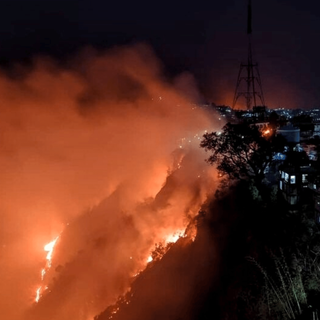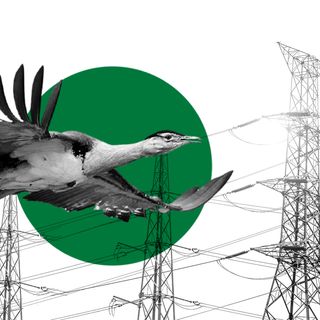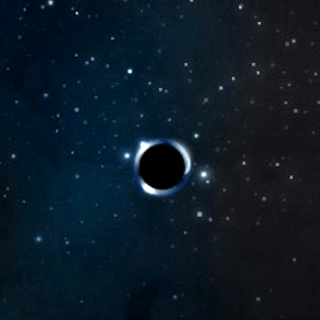
North and South Poles Are Shifting to New Locations as Glacial Ice Melts: Study
True north isn’t where it used to be.

The melting of glaciers due to global warming is helping shift the North and South poles, according to a new study. The research confirms the monumental impact human activities continue to have on the planet — climate change-inducing activities have, in fact, been modifying the poles’ positions since the 1990s.
Published in the journal Geophysical Research Letters, the study explains the impact of the climate crisis on Earth’s geographical make-up. The Earth rotates around an axis — an imaginary line that passes through the center of the globe — just like other planets in our solar system. The geographical north and south poles are points where this axis passes through the Earth’s surface, but these points, contrary to popular belief, are not fixed. Instead, their location is influenced by the change in Earth’s mass and how its distributed. The mass can be altered because of changes in the atmosphere, ocean current, or solid Earth crust — causing the poles to drift.
The present study confirms the impact climate change has on these polar shifts: since the 1990s, the loss of a trillion tons of glacial ice is one of the key reasons for the Earth’s increased tilt on its axis. Since that time, global ice loss has increased rapidly and continues to be one of the most tangible consequences of climate change.
“The accelerated decline [in water stored on land] resulting from glacial ice melting is the main driver of the rapid polar drift after the 1990s,” Shanshan Deng, from the Institute of Geographic Sciences and Natural Resources Research at the Chinese Academy of Sciences, and her team, concluded in the paper.
Related on The Swaddle:
The Himalayas Are Set to Lose 66% of Their Ice by 2100
Researchers from the American Geophysical Union, who wrote the paper, analyzed ice loss and groundwater usage in tandem with the geographical poles’ movements. In 1995, the direction of polar drift shifted from southward to eastward; but it was the speed of the shift that was more surprising. The average speed of drift between 1995 to 2020 was 17 times more than the average speed recorded between 1981 to 1995 — the poles’ locations have been changing at a faster pace.
Contemporary ways of recording polar shifts make use of satellite data, using gravity data from the Grace satellite that was launched in 2002; the satellite had previously pointed out polar shifts in 2005 and then in 2012, both because of increased ice loss. “But Deng’s research breaks new ground by extending the link to before the satellite’s launch, showing human activities have been shifting the poles since the 1990s, almost three decades ago,” Damian Carrington writes in The Guardian.
The present research also cites low levels of groundwater as another reason for the polar shift. Groundwater, the water stored under lands, has severely depleted due to industrial and agricultural use. Almost 18 tonnes of water from deep underground reservoirs has been removed without being replaced, according to estimates. The severe redistribution of water across the planet has thus imbalanced the Earth’s axis and shifted its poles.
For years now scientists have been debating that a new geological epoch should be announced, one that accurately echoes humanity’s profound impact on Earth. The current epoch, or time period, is called Holocene, which signifies the 12,000 years of stable climate and civilization growth since the last ice age. However, the International Geological Congress in 2016 urged international leaders to declare the new epoch the Anthropocene, which means a time when human activities have impacted the Earth; the declaration will help in shaping international efforts, they say.
“Since the planet is our life support system – we are essentially the crew of a largish spaceship – interference with its functioning at this level and on this scale is highly significant,” Chris Rapley, a climate scientist at University College London and former director of the Science Museum in London, said to The Guardian. “If you or I were crew on a smaller spacecraft, it would be unthinkable to interfere with the systems that provide us with air, water, fodder, and climate control. But the shift into the Anthropocene tells us that we are playing with fire, a potentially reckless mode of behavior which we are likely to come to regret unless we get a grip on the situation.”
The dawn of the Anthropocene, experts say, is a significant moment in time. “The darkest prognosis for the next millennium is that bio, cyber or environmental catastrophes could foreclose humanity’s immense potential, leaving a depleted biosphere,” Martin Rees, former president of the U.K.’s Royal Society, said in an article.
Saumya Kalia is an Associate Editor at The Swaddle. Her journalism and writing explore issues of social justice, digital sub-cultures, media ecosystem, literature, and memory as they cut across socio-cultural periods. You can reach her at @Saumya_Kalia.
Related


To Save the Great Indian Bustard, Remove Overhead Power Cables, SC Says
